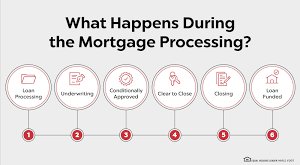Understanding High Balance Mortgages
A high balance mortgage is a type of loan that exceeds the standard conforming loan limits but does not reach the thresholds for a jumbo loan. These limits vary by region, with higher limits in more expensive areas. High balance mortgages are often sought in areas with elevated property values where conforming loan limits are insufficient.
Why Use a High Balance Mortgage Calculator?
A high balance mortgage calculator is a tool designed to help borrowers estimate their monthly payments on larger loans. It takes into account the loan amount, interest rate, loan term, and other variables to provide a clear picture of your financial commitment. Using this calculator can help you budget better, understand your mortgage options, and make informed decisions about your loan.
Key Features of a High Balance Mortgage Calculator
- Loan Amount Input: Enter the total amount of your high balance mortgage.
- Interest Rate: Input the annual interest rate of your loan.
- Loan Term: Specify the duration of the loan, typically in years.
- Property Taxes and Insurance: Include estimates for property taxes and homeowner’s insurance.
- PMI (Private Mortgage Insurance): If applicable, input any PMI costs if your down payment is less than 20%.
- Amortization Schedule: View how your loan payments are divided between principal and interest over time.
How to Use a High Balance Mortgage Calculator
- Gather Loan Details: Collect information about your loan amount, interest rate, term, and any additional costs.
- Input Data: Enter these details into the calculator fields.
- Review Results: Analyze the estimated monthly payment, total interest paid, and amortization schedule.
- Adjust Variables: Experiment with different interest rates, loan terms, and down payments to see how they impact your payments.
Benefits of Using a High Balance Mortgage Calculator
- Accurate Payment Estimates: Provides precise monthly payment amounts, including principal and interest.
- Financial Planning: Helps with budgeting by showing how much you’ll need to pay each month.
- Comparison Tool: Allows you to compare different loan scenarios and terms.
- Understanding Amortization: Offers a clear view of how payments are allocated between principal and interest over the life of the loan.
Common Challenges with High Balance Mortgages
- Higher Interest Rates: High balance mortgages often come with higher interest rates compared to conforming loans.
- Increased Monthly Payments: Larger loan amounts lead to higher monthly payments.
- Stricter Qualification Requirements: Lenders may impose stricter credit and income requirements for high balance mortgages.
- Potential PMI Costs: If your down payment is less than 20%, you might be required to pay PMI, increasing your monthly costs.
Tips for Managing a High Balance Mortgage
- Improve Your Credit Score: A higher credit score can help you secure a better interest rate.
- Increase Your Down Payment: A larger down payment can reduce your loan amount and potentially avoid PMI.
- Shop Around for Rates: Compare rates from different lenders to find the best deal.
- Consider Refinancing: If interest rates drop, refinancing could lower your monthly payments.
- Budget for Extra Costs: Account for property taxes, insurance, and PMI in your budget.
- Maintain a Good Payment History: Consistent payments can help you build equity and improve your financial standing.
- Explore Loan Options: Investigate different types of mortgages, such as adjustable-rate mortgages (ARMs) or fixed-rate options.
- Monitor Interest Rates: Stay informed about market rates and consider adjusting your loan if rates change.
- Use Financial Tools: Utilize budgeting apps and calculators to manage your finances effectively.
- Consult a Financial Advisor: Seek professional advice to make informed decisions about your mortgage.
FAQs About High Balance Mortgages
- What is a high balance mortgage?
- A high balance mortgage is a loan amount that exceeds conforming loan limits but is below jumbo loan thresholds.
- How do high balance mortgage limits vary by location?
- Limits vary by region, with higher limits in areas with elevated property values.
- What is the main advantage of using a high balance mortgage calculator?
- It provides an accurate estimate of monthly payments and helps with financial planning.
- Can I use a high balance mortgage calculator for any type of mortgage?
- It’s specifically designed for high balance mortgages, but some calculators can handle other types as well.
- What should I do if I need to adjust my mortgage payment?
- Experiment with different loan terms, interest rates, and down payments in the calculator.
- Are high balance mortgages more expensive than conforming loans?
- They often come with higher interest rates and potentially higher monthly payments.
- Do high balance mortgages require PMI?
- PMI may be required if your down payment is less than 20%.
- How can I reduce the cost of my high balance mortgage?
- Improve your credit score, increase your down payment, and shop around for better rates.
- What role does the amortization schedule play?
- It shows how payments are divided between principal and interest over the life of the loan.
- Should I consider refinancing my high balance mortgage?
- Refinancing can be beneficial if it lowers your interest rate or monthly payments.
Conclusion
A high balance mortgage calculator is an invaluable tool for anyone managing a larger loan. By understanding how to use this calculator and considering the various factors that impact your mortgage, you can make more informed decisions and better manage your financial commitments. As you navigate the complexities of high balance mortgages, remember to use these tools and tips to guide your choices and ensure that your mortgage aligns with your financial goals.
In summary, high balance mortgages come with their own set of challenges and considerations. Utilizing a high balance mortgage calculator can help you gain clarity on your financial obligations and explore options for managing your loan effectively. With careful planning and informed decision-making, you can successfully navigate the high balance mortgage landscape and achieve your homeownership goals.
 mortgage.kbk.news
mortgage.kbk.news
